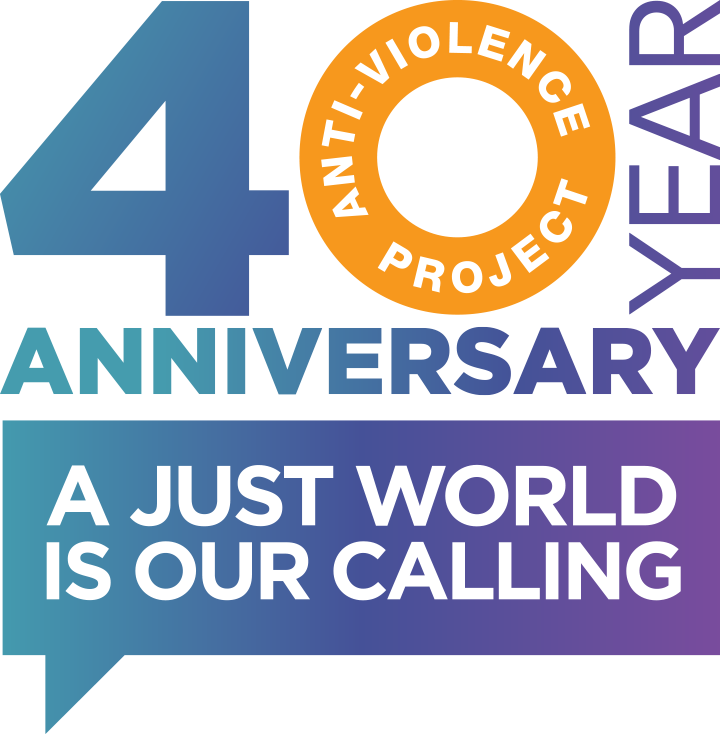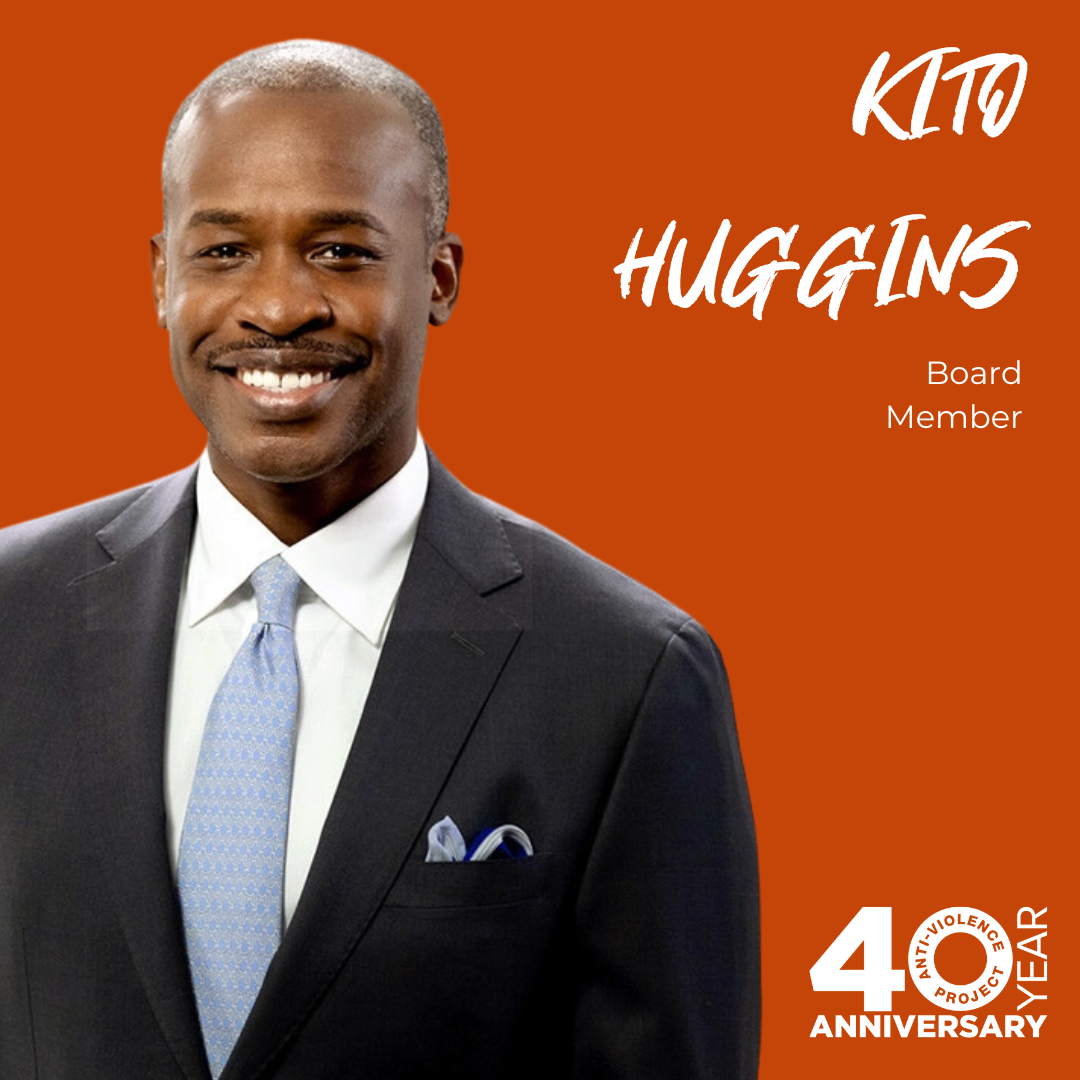
Kathy Flores has always been one to take initiative. “Diverse & Resilient basically gave me this program and said, ‘Here, if you can build it, build it.’” From training domestic violence shelters on working with gender non-conforming people to decentering whiteness in professional environments, Kathy has tackled a variety of issues. “Anti-violence advocates are a special kind of geek,” she said.
Kathy has served for many years as part of the national movement to end violence within and against LGBTQ communities, including as part of the Governance Committee of the National Coalition of Anti-Violence Programs (NCAVP), which AVP coordinates. NCAVP is a national coalition of over 40 organizations and programs that work to prevent, respond to, and end all forms of violence against and within LGBTQ communities. Working outside the mainstream has had its ups and downs, as Kathy recounts her time working to ensure shelters served the most marginalized communities. Here, Kathy shares part of her story with us.
How did you get involved with AVP?
I was working in a mainstream domestic violence shelter from 2004 to about 2009. In my time there, I started initiatives to serve LGBTQ survivors because at that time it was traditionally a women’s shelter. Everything was very cisgender women-focused. Around 2006 I started getting NCAVP email notices, which helped me really kind of understand the intersection of intimate partner violence and other forms of violence, and I got very inspired by it. I left that job and went to work for the mayor’s office, which I thought was an activism job. It was not an activism job, but a DEI job. , So I started a volunteer project called the Fox Valley LGBTQ Anti-Violence Project in 2009. And that’s when I really started getting inspiration from the National Coalition of Anti-Violence Programs (NCAVP). At the time, I thought you had to have a paid staff in order to be a part of NCAVP so I wasn’t an active member until later. Being a member really helped me build the dream of starting an anti-violence program focused on the Black Indigenous People of Color (BIPOC) community here in Wisconsin. Diverse and Resilient was hiring for an intimate partner violence (IPV) [staff] person to start a warm line statewide. And they basically gave me this program and said, ”Here, if you can build it, build it.” So, it was just me running around the state, to just about every domestic violence shelter, training everybody about the issues facing trans women and [gender nonconforming] survivors. When we started that program, there were only about three shelters in Wisconsin that were serving all genders. And by the time the warm line was up about three years later, we had about 70 shelters serving all genders. Now because of the work of LGBTQ advocates and because of changes to grant requirements by DCF and VOCA, all DV shelters are required to serve all genders.
What inspired you to get involved with AVP?
So, I came out later in life. I came out when I was 36, and that was in 2004. As I was working in domestic violence and recognizing my own identity, I came out and really just wanted to start doing queer work. But, I wanted to do it in the work that I was already doing, which was domestic violence work. And it was so hard. I was trying to break out of that heteronormative, cisnormative world. I just jumped in with both feet because I’m a survivor of domestic violence myself and there was just so much I didn’t know about how to reach out to the LGBTQ community at the time in order to offer my help. I just knew from working with LGBTQ survivors in shelter, that they wanted to talk to somebody at the shelter who was queer, and then [I recognized] all survivors really aren’t feeling these shelters and there’s a reason. Their brochures are all women and all their programming was designed by cis women for cis women And that’s what kind of had me branching out on my own because I recognized I couldn’t do it in the mainstream. We’re not a fit for the mainstream.
I love the memory of those early days in the shelter because it is where I met my partner Z when they were volunteering to help start our website.
Do you have a specific memory from your time with AVP that sticks out?
There’s a hundred experiences, but I would say in 2017, I lost a friend to hate violence. I’d like to give a trauma warning here. I’m going to talk about my friend Drew, who was killed at the hands of somebody he hooked up with on his birthday. And that person really hated himself, just hated himself as a gay person, hadn’t come out, and ended up killing my friend Drew. And at that time, I had been working with NCAVP on the Governance Committee, but it was mostly outgoing support. Until that point, there was never a need for me as an advocate and as a person impacted by violence. When Drew died, I needed the support of the coalition. The NCAVP Governance Committee members really wrapped their arms around me and helped me get through it as an individual and, as an advocate, to figure out how do I respond to this in the community when it was somebody that I loved and knew so well. The NCAVP Governance Committee helped me create a campaign about loving yourself, trying to get to kids younger with the message of self-love and acceptance. And how to reach out for help.
What impact has working with AVP had on your advocacy?
I think the most impactful way that working as part of NCAVP has shaped my advocacy has been to highlight the need to center Black trans women, to center the voices of Black queer people, BIPOC folks. And I think without NCAVP, I would not have known how to do that as well. I’m Latinx myself, but white presenting. So I come to the work with a lot of recognized privilege, and I needed to listen to the voices of those historically excluded, to be able to really build our program in a way that mirrored what other programs were doing successfully. It’s just really important to not just have representation, but representation from the community, that is the community. And, I think that’s been the greatest gift because it helps us all. As everybody knows in this work, if you serve those who have been historically excluded, everybody gets served. White people will always get served. So when we center the BIPOC folks, it just means that now we’ve included a whole bunch of people who haven’t been included before, and it makes our programs more cutting edge, because otherwise, we wouldn’t be doing transformative justice work. That’s not a conversation that happens in white communities. We all cause harm in community. How [can] we be accountable to each other? Today, Diverse & Resilient’s AVP has grown from just one advocate, me, to a team of five with offices in Northeast and Southeast Wisconsin. I truly believe that our AVP would not exist without NCAVP.
This interview has been shortened and condensed for clarity.




